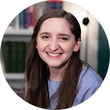- OT
- Industry
- Equipment and suppliers
- Supporting seamless myopia management conversations
100% Optical
Supporting seamless myopia management conversations
Corrina McElduff, director of professional affairs at Ocumetra, talked OT through the company’s myopia management platform and personalised reports at 100% Optical
Ocumetra presented its myopia management platform at 100% Optical in February.
The data analytics company aims to support eye care professionals to communicate myopia management with parents, enabling them to make informed choices.
Corrina McElduff, director of professional affairs at Ocumetra, told OT that the company has been building the platform for 10 years.
Explaining the background for the platform, she said: “At the moment we have a whole host of treatment options available for kids, which is great, and there are solutions that we are really familiar with, but trying to get the message across to parents and make that message land is often quite difficult in day-to-day practice.”
Ocumetra’s mEye Guide is designed to support and streamline conversations around myopia and treatment options in practice. Through the tool, practitioners can create a personalised report for the child.
McElduff noted that parents can come away from consultations feeling overwhelmed or still not quite understanding, whereas the report is designed to provide them with “everything they need to know about their child specifically, in a format they can take away, that is individual to their child.”
Providing a demonstration of the platform, McElduff explained that the report is broken down into six sections covering: how the child’s myopia compares to the average, a vision simulator, how myopia management could help, axial length analysis, available treatments, and lifestyle advice.
First, practitioners can share how the child’s level of myopia compares with other children of the same age and sex. The report also outlines a conservative estimate of predicted adult levels of myopia without treatment.
A vision simulator is included in the platform, which McElduff described as “one of the most powerful aspects of our tool.”
The tool illustrates how the child sees currently, and how they may see as an adult without intervention. This helps to provide meaning to the numbers given, McElduff shared.
ECPs can talk through short- and long-term barriers and how myopia management could benefit the patient, also indicating how much myopia could be saved with treatment.
One recent addition to the tool is an axial length analysis feature for clinicians. Practices can input biometer readings or can use data to provide an estimated axial length matched for age and sex.
Discussing the ethos behind the tool, McElduff said: “We can teach people – that measurement – what does it mean?”
Clinicians can review what ‘normal’ levels of axial length would be, along with treatment targets. Using an example report for a seven-year-old girl, McElduff said: “We know her axial length is going to change, she is going to grow, but what is normal versus myopic growth?”
All available treatment options are listed in the report, helping to involve parents in the conversation around options for their child and informing decisions.
The report ends with a section titled: ‘What else can we do?’
“There is so much information to give parents during this very small appointment window and that free time you have to discuss this. Parents can click on this and find out what they need to start going to maximise their child’s treatment, and possibly delay any onset of myopia in the first place,” McElduff shared.
The reports are designed to be shareable for parents and guardians because, often, only one is present in the consultation.
“This allows that consistency of messaging, because otherwise, verbally given and non-specifically given – such as handing out leaflets – we’re expecting whoever was in that consulting room to relay the correct information to someone else at home, and we know that doesn’t happen,” she said.
For “very curious parents” a link is also included in the report to the clinical studies and papers that sit behind the tool and myopia management.
McElduff noted that clinicians may not go through every section of the report during the consultation, but providing the parents with the information in this digital format makes it easier for them to access and revisit it – rather than using a leaflet that may be lost in a bag.



Comments (0)
You must be logged in to join the discussion. Log in